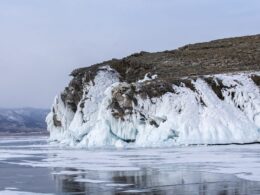A new study published in Nature warns that global temperatures could continue to rise even after achieving net zero if countries include natural carbon sinks, such as forests and oceans, in their emission reduction targets. The study calls for a stricter approach to net zero, urging governments to focus on geological carbon storage and reductions in fossil fuel emissions.
Net zero, defined as a balance between emissions produced and removed from the atmosphere, is a key goal for countries under the 2015 Paris Agreement. However, the paper argues that increasing reliance on natural carbon sinks undermines efforts to phase out oil, gas, and coal, the primary drivers of global warming.
Professor Joeri Rogelj, co-author of the paper and Director of Research at the Grantham Institute at Imperial College London, emphasises the need for clarity in emission targets. “Targets should distinguish between emissions reductions, geological removals that effectively put CO₂ away forever, and any climate mitigation action that draws on forests or storing carbon in nature,” he said. “Failing to do so muddies the waters and our understanding of whether and when we could stop global warming.”
The study stresses that natural sinks should swarming post-net zero rather than offset ongoing fossil fuel emissions. Without addressing this distinction, countries risk prolonging warming even after declaring net zero.
To address this issue, the researchers advocate for “geological net zero,” which offsets emissions from hard-to-decarbonise industries, such as steel production, by storing an equivalent amount of carbon dioxide underground through carbon capture technologies.
Professor Myles Allen, lead author of the study and Head of Atmospheric, Oceanic, and Planetary Physics at the University of Oxford, explains: “We are already counting on forests and oceans to mop up our past emissions, most of which came from burning stuff we dug out of the ground. We can’t expect them to compensate for future emissions as well. By mid-century, any carbon that still comes out of the ground will have to go back down, to permanent storage. That’s geological net zero.”
The study’s publication comes as countries prepare to announce new 2035 Nationally Determined Contributions (NDCs) by February next year. These short-term targets act as milestones toward net zero but must now address the distinction between natural carbon sinks and permanent emission reductions.
Dr Glen Peters of the CICERO Centre for International Climate Research in Oslo, Norway, and co-author of the study, stresses the importance of keeping natural and fossil carbon sinks separate. “Natural carbon sinks currently clean up around half our annual emissions for free, but this ecosystem service must be kept separate from the fossil emissions driving climate change. Relabelling things will not stop global warming.”
The authors call for governments to accelerate renewable energy adoption, such as wind and solar, while ensuring fossil fuel emissions are captured and stored permanently. By focusing on geological carbon storage and reducing reliance on natural sinks, the study outlines a clear path to sustainable net zero targets and long-term climate stability.





















